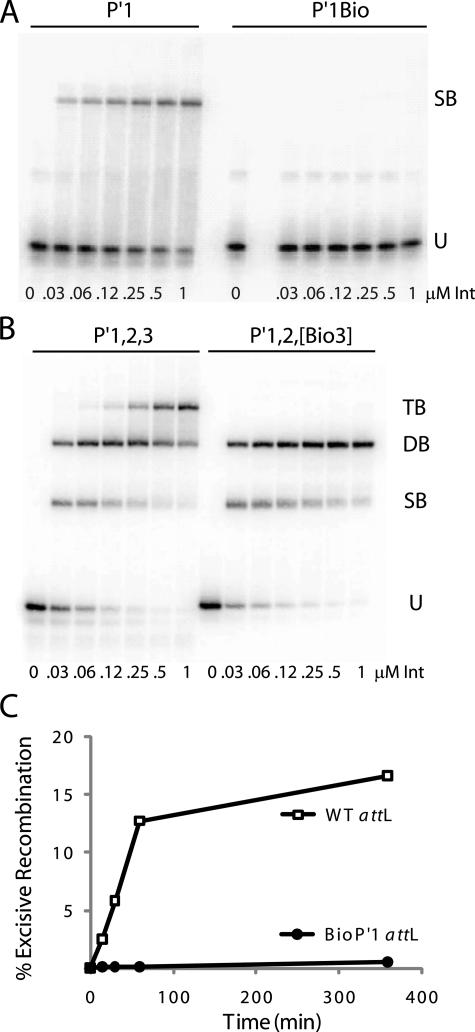FIGURE 4.
BIA of Int arm-type site interactions. A, increasing concentrations of Int were used in gel mobility shift binding assays with a 33-bp radiolabeled oligonucleotide encoding the P′1 arm-type site (P′1) and the same fragment containing a biotin dT substitution in P′1(P′1Bio) at position 4 in the top strand of the arm-type site consensus sequence (10). U, unbound substrate; SB, single-bound substrate. B, gel mobility shift binding assays with a 50-bp radiolabeled oligonucleotide encoding the P′1,2,3 arm-type sites (P′1,2,3) and the same fragment containing biotin dT substitutions (P′1,2,[Bio3]) at position 4 in the top strand and position 6 in the bottom strand arm-type site consensus sequence. U, SB, DB, and TB, unbound and single-, double-, and triple-bound substrate, respectively. C, biotin interference assay of excisive recombination between attR and attL (wild-type (WT)) or an attL with a biotin dT insertion (P′1Bio) at the bottom strand T at position 6 of P′1.

